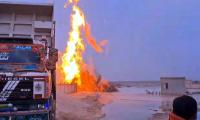the JF-17 to be equipped with any weapon purchased on the open market.
Though the JF-17 can carry up to four SD-10 radar-guided air-to-air missiles, Mahmood states that the preference of the PAF is to use the space and weight for additional fuel tanks. The standard configuration of the JF-17 is therefore currently two SD-10s and two to three 1,000-litre external fuel tanks in addition to the 800-litre tank in the abdomen of the aircraft, he added.
According to the Sina Military report, expert comparisons between the JF-17 and the US F-16 have the Chinese-Pakistani aircraft dominating, adding that it is akin to a featherweight knocking out a heavyweight. The US has tried to get its hands on the JF-17 to analyse why that is the case but has been turned down by Pakistan because of a deal with China to never share the jet’s technology with the US or India, the report added.
That call widened on Wednesday to include a halt to all shopping for one day
This year, 78 nations and semi-autonomous territories have at least one billionaire on list, same number as last year
Afghans who hold PoR cards from UN refugee agency, UNHCR, are also to be moved outside capital and neighbouring city...
Film was announced last year and makers gave fans glimpse of it by dropping a teaser on April 1
It is one of most striking economic defeats suffered by America in more than 40 years covering international affairs,...
These centres aim to provide specialised education, training and rehabilitation for children with autism







